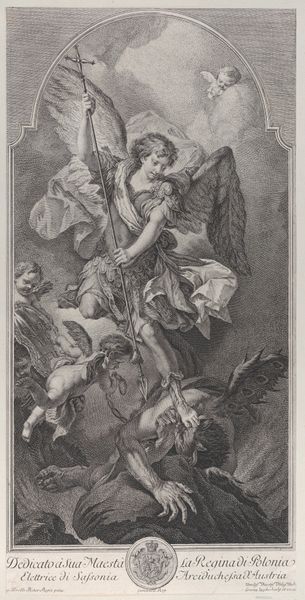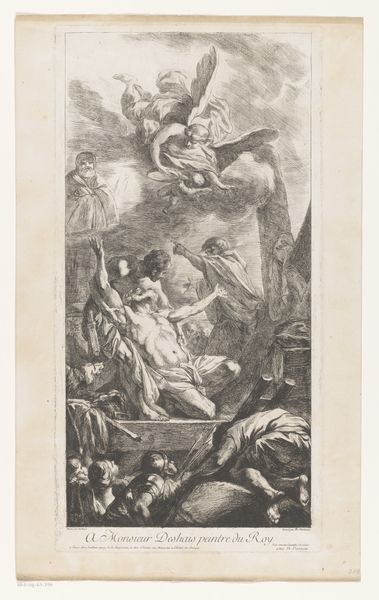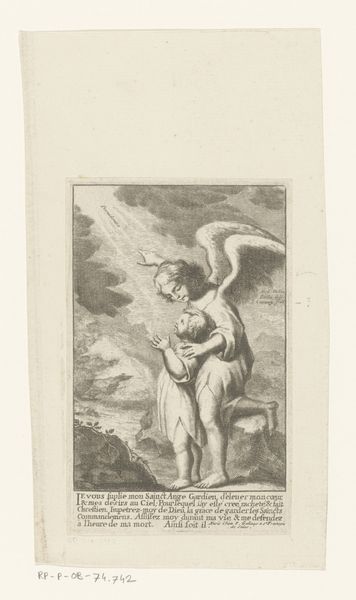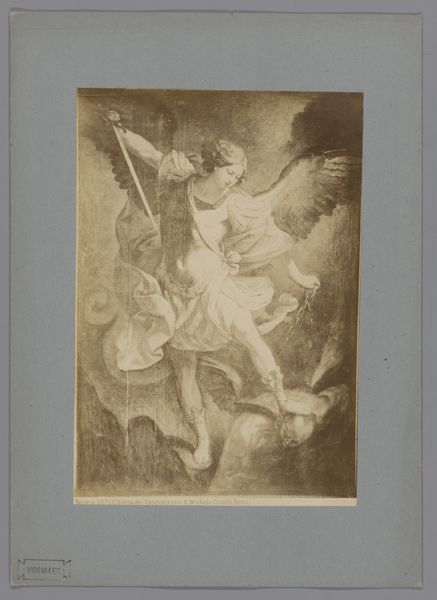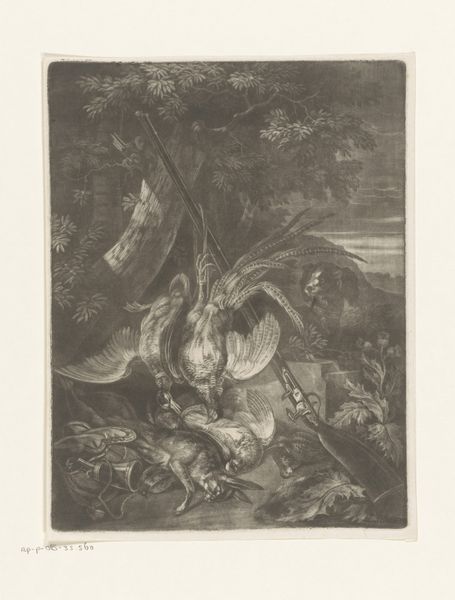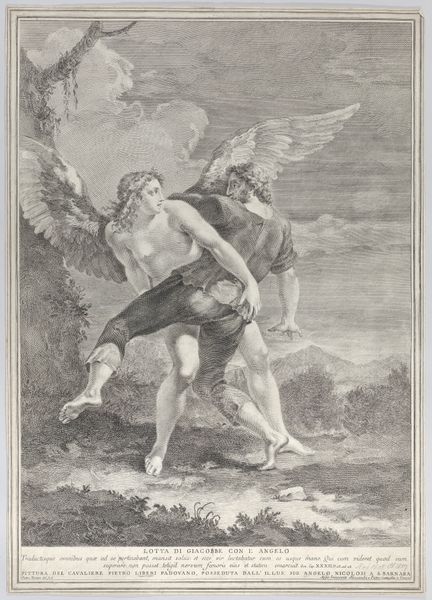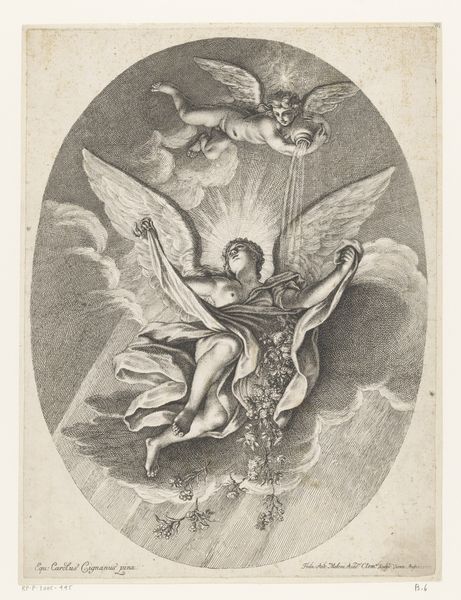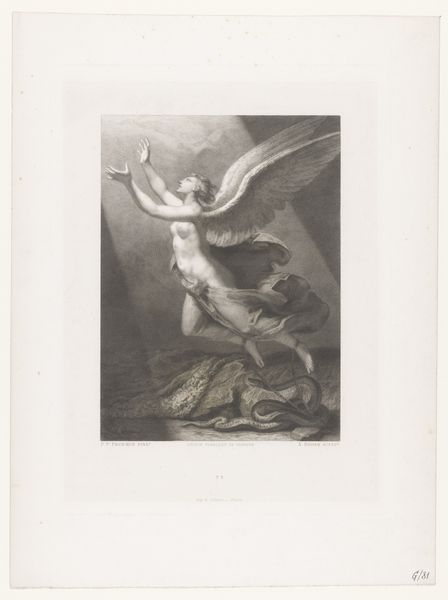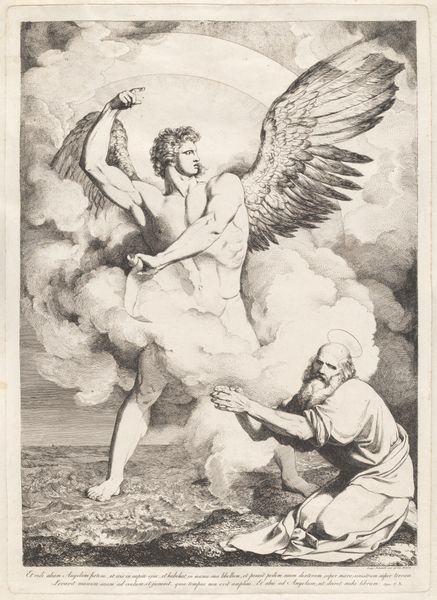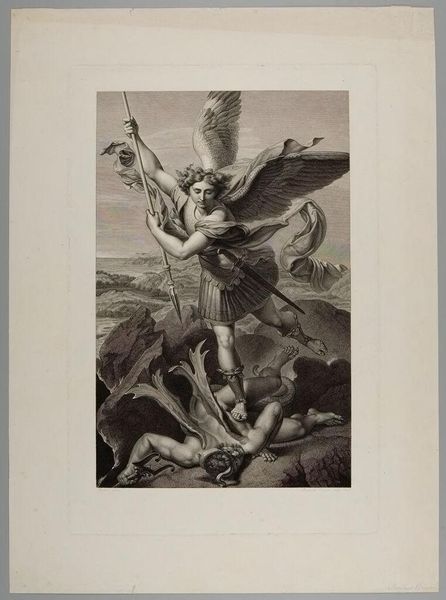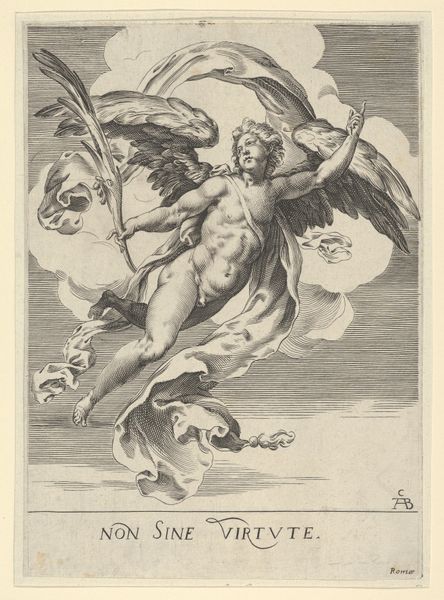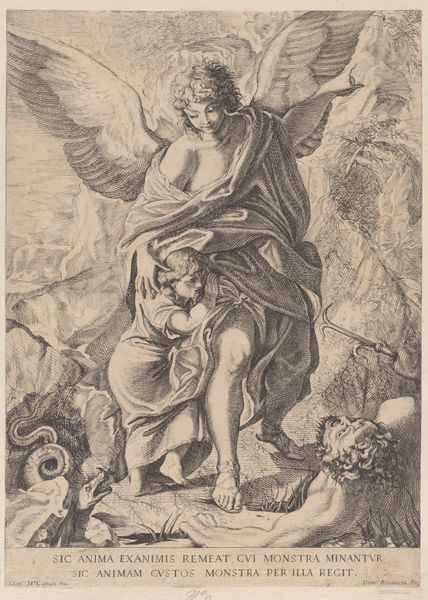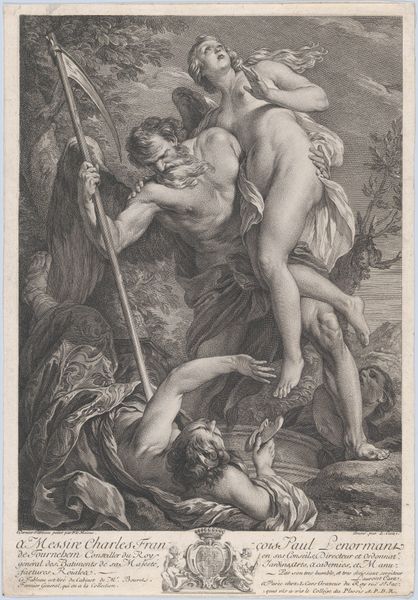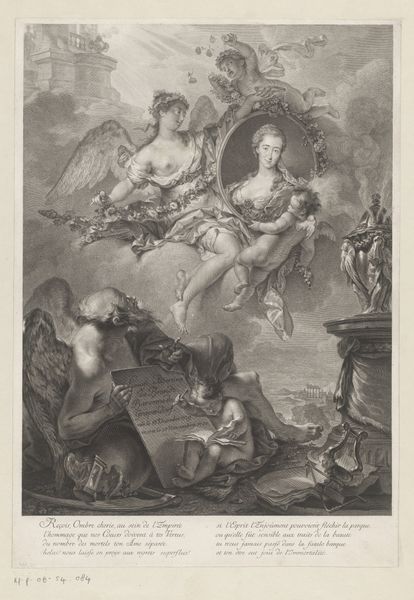
print, engraving
#
allegory
#
baroque
# print
#
figuration
#
history-painting
#
engraving
#
watercolor
Dimensions: height 504 mm, width 353 mm
Copyright: Rijks Museum: Open Domain
Curator: Right now, we're looking at a print called "Tijd knipt de vleugels van Cupido"—or, in English, "Time Clips Cupid's Wings"—an engraving made sometime between 1738 and 1765. It's attributed to James McArdell and is currently housed here at the Rijksmuseum. What's grabbing your eye? Editor: My eyes lock immediately on this really strange sort of brutal tenderness—this huge winged figure, this gaunt "Father Time," is almost cradling, but really restraining, a struggling little Cupid! The wings…they're gorgeous and powerful. And Father Time's face, the harsh expression of absolute…resignation? Curator: The composition, relying on Baroque dynamics, presents a very legible allegory, wouldn’t you say? Notice how McArdell uses the stark contrasts of light and shadow. Time, personified as an old, winged man, is shown clipping the wings of Cupid, representing love, which alludes to love's fleeting and ephemeral nature. Editor: Definitely, the imagery screams “allegory.” A love that doesn't last...The dark palette amplifies the almost melancholy mood—it speaks of beauty that fades. See, how those objects scattered on the ground—broken bows, perhaps extinguished torches? Remnants of passionate moments turned to dust. There is so much here to explore in this picture. Curator: The choice of engraving—a medium known for its precision and capacity for detail—enhances this narrative, don’t you think? Notice, how Time is also winged, and almost as ethereal as Cupid himself! A detail that serves to further elaborate temporality’s impact, it invades even Love’s domain. Also, how would you address the historical references of this Baroque piece? Editor: Hah! Clever you—leading us to broader observations. It reminds us, maybe uncomfortably, of life's impermanence, our desires’ changing nature, even aging's effect on the capacity to love—which hits different now that I am no longer 20! I also appreciate the complex visual statement on love and time—pretty heady for an image of cherubs. Curator: Well put. As we conclude, it strikes me how "Time Clips Cupid's Wings," isn't merely a historical artifact; it is rather a poignant reflection on the universal themes of love, loss, and the inexorable march of time, encoded through visual rhetoric. Editor: Precisely. Now, whether we frame it as historical analysis or contemporary emotional resonance, the art keeps speaking to us about beauty, broken hearts, and how our wings eventually need a little trim. And it does so with the melancholic and powerful language of images.
Comments
No comments
Be the first to comment and join the conversation on the ultimate creative platform.
